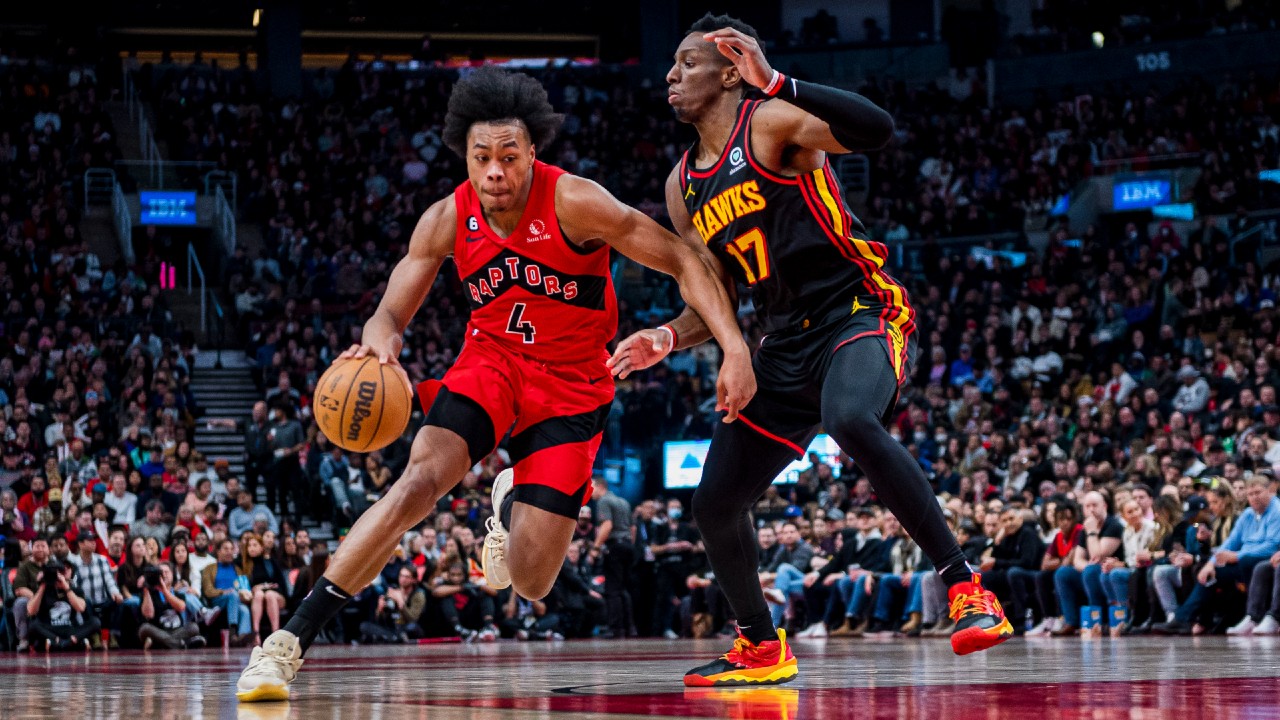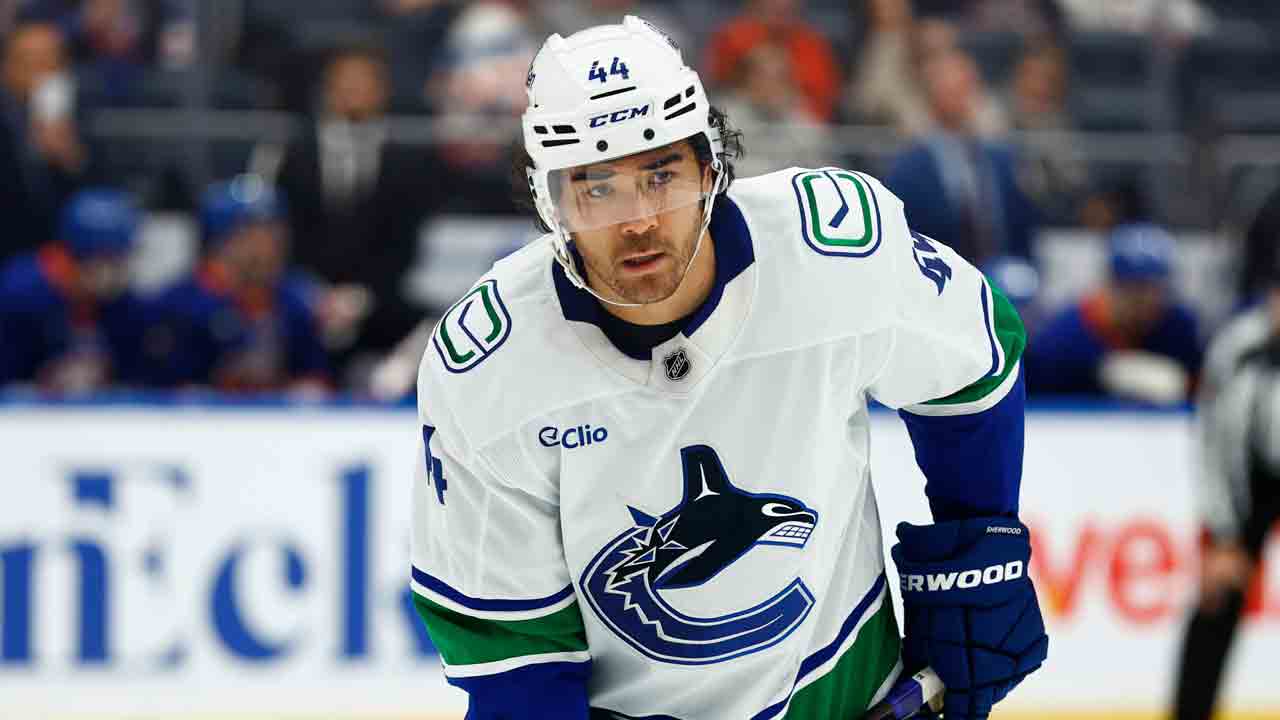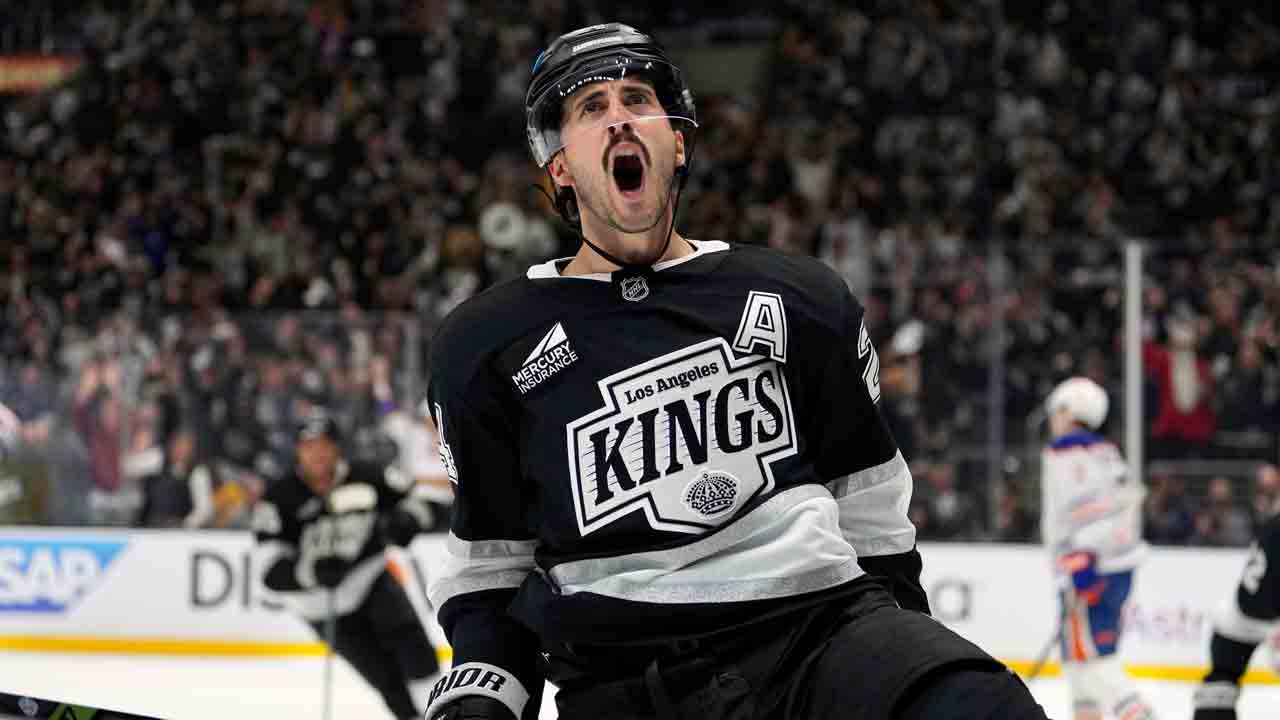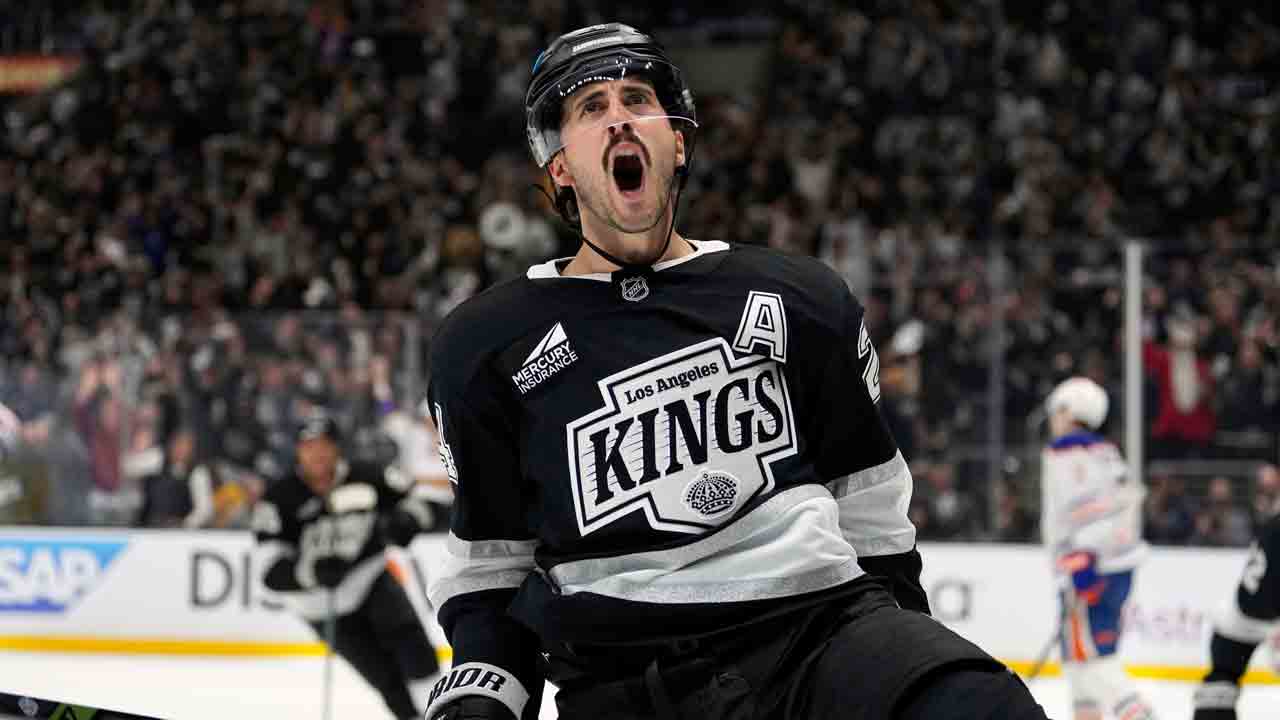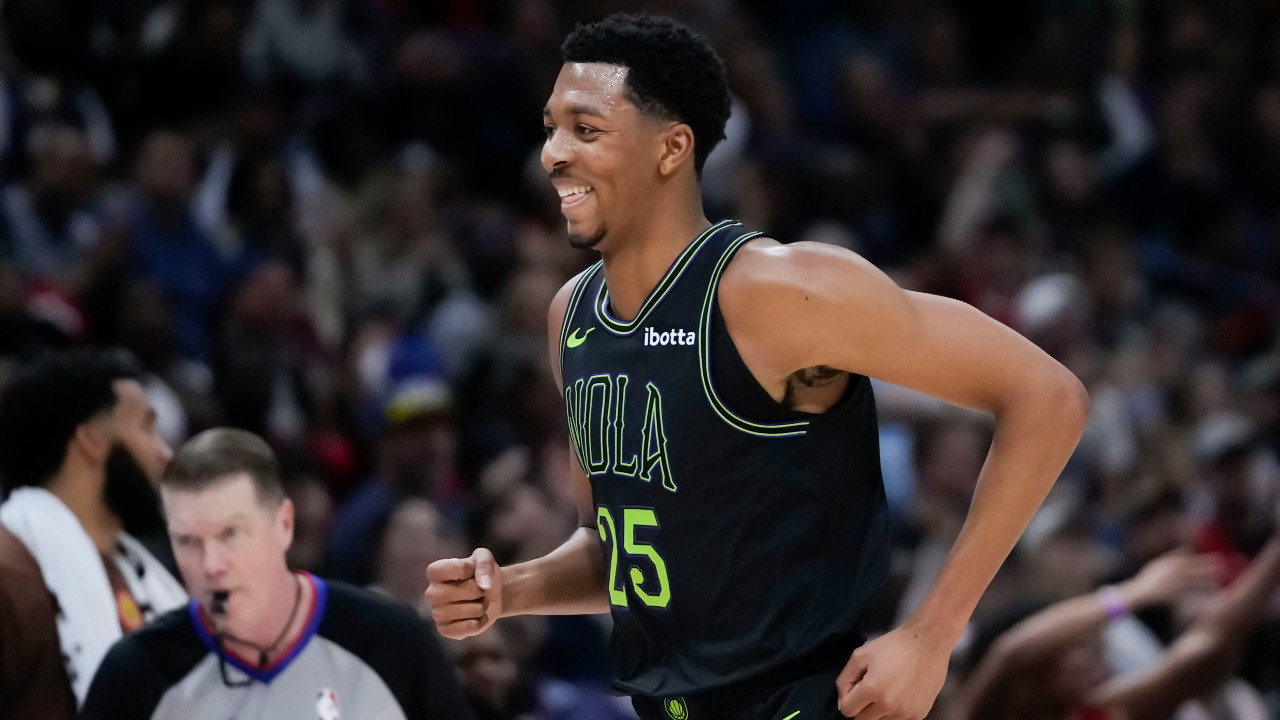
He is leading one of the NBA’s exciting, upstart teams, a team that is competitive perhaps ahead of schedule. Originally drafted elsewhere, his team acquired him in his second season as the key prospect piece in a larger package sending out an All-Star. At the time of the trade, he was well-regarded — a former late lottery pick who made an All-Rookie team — but wasn’t yet considered, or producing like, the star he’d become.
Remarkably, that paragraph could describe two different players.
In 2019, the Thunder acquired Shai Gilgeous-Alexander, Danilo Gallinari, four unprotected first-round picks, one protected first-round pick, and two first-round pick swaps for Paul George. It was a massive haul for a star that allowed the Clippers to lure Kawhi Leonard as a free agent and eventually made Gilgeous-Alexander the face of the Thunder franchise. It was not, however, a sure thing Gilgeous-Alexander was a star. An 11th-overall pick, Gilgeous-Alexander made All-Rookie Second Team, came sixth in Rookie of the Year voting, and had averaged 10.8 points and 3.3 assists. He had believers around the league (ahem) but probably not to the level of legitimate MVP candidate.
In 2021, the Pacers acquired Tyrese Haliburton, Buddy Hield, and Tristan Thompson from the Kings for Domantas Sabonis, Justin Holiday, Jeremy Lamb, and a second-round pick. Framed as the Pacers moving on from Sabonis and the Kings deciding between Haliburton and De’Aaron Fox, it was a win-win challenge type of trade. A bit more advanced out of the gate than Gilgeous-Alexander, Haliburton had been picked 12th overall, made All-Rookie First Team and came third in Rookie of the Year voting, while averaging 13 points and 5.3 assists in his first year. Even still, Haliburton was discussed as a great piece, not necessarily a future MVP type.
The similarities between those two situations don’t make them the norm. Acquiring a future star in a trade requires sending out a star and identifying that potential correctly.
Among the league’s best players this year, there are a mix of these buy-before-they-pop stars, homegrown stars with whom teams have had to have patience, homegrown stars who were stars out of the gate, and players who took multiple stops to find a star level a little later. In Scottie Barnes, the Raptors have found and are developing a star of the homegrown-type; if they decide to trade a current All-Star level player (or elite role player) before the deadline, their challenge will be identifying the next about-to-blow-up star.
So, who is the next Haliburton or Gilgeous-Alexander, a well-regarded player off to a solid start to their career that has the potential to reach star status down the line?
I recently posed this question to William Lou on The Raptors Show, to Samson Folk of Raptors Republic, and to fans on Twitter. What follows is a look at some potential candidates, should the Raptors decide to shop Pascal Siakam, OG Anunoby, or anyone else before the Feb. 8 trade deadline.
Honorable Mention / Also Receiving Votes
There were a lot of suggestions, which speaks to the depth of the young talent pool around the league.
Not all of those qualified, as some people suggested players who are just way too old to fit this definition (Andrew Wiggins as a buy-low in 2024, seriously?), just a bit too old for this definition (sixth year or later), who are still rookies (obviously fun to dream on but likely still tied to their premium draft value), or have already broken out as stars (you’re too late to get them in this kind of deal).
There were players identified who fit two other classes we can examine later: Re-draft candidates (players coming off of a disappointing first contract who are worth seeing if you could get more out of, developmentally) and failed stars (top picks who probably still cost you a lot as an asset but might have a short buy-lower window). I also didn’t include players who signed rookie-scale extensions this year, as they are subject to a “poison pill provision” that can make them difficult to trade for.
Honorable mention, you might be too late to buy low: Jalen Williams, Shaedon Sharpe.
Honorable mention, you’d really have to blow the team away: Jalen Suggs, Keegan Murray.
Honorable mention, you can probably get them as a smaller piece in a deal: Jaden Springer, Ziaire Williams, Jalen Smith.
Honorable mention, went over my word count: A.J. Griffin, Benedict Mathurin, Jaden Hardy, Jonathan Kuminga, Dyson Daniels, Herbert Jones.
Trey Murphy III
Murphy was the No. 17 pick in 2021 and wound up in New Orleans as a part of that massive, three-team, Jonas Valančiūnas-based, Grizzlies-Pelicans-Hornets framework. While that’s been a really nice fit for Murphy, there are two things that have kept him from potentially expanding his role: An injury that cost him the early part of this season, and playing on arguably the deepest team in the league.
The Pelicans are very deep, deep enough that first-round pick and early-season success story Jordan Hawkins has seen his role shrink. In addition to those two, New Orleans can bring Jose Alvarado, Naji Marshall, and Daniels off the bench, plus potentially Larry Nance Jr. later in the year. Depth is really important, but you’re not playing 11 guys in the playoffs, and the Pelicans might have to consider a consolidation trade at some point to turn that depth into a stronger top-eight. I like Daniels and Jones a lot; Murphy is the name I’m targeting first.
Still just 23, Murphy checks a lot of potential boxes for Toronto. He’s six-foot-eight with a 7-foot wingspan and has posted strong steal rates in the past. You can see him becoming a plus defender with the tools he has, even if it can be pretty up-and-down right now. Even stabilizing as an average wing defender could be enough, given the offensive upside here.
Most notably for his fit with Barnes, Murphy has hit 40 percent of his career 3-point attempts, increasing his volume to 9.3 attempts per-36 minutes this year, suggesting this is a skill that can scale to even higher volume. He’s also taking a slightly higher rate of self-created threes, which is an important note in terms of scaling up a role.
Murphy has also taken a massive jump as a playmaker in a small sample this year. In his first two seasons, he rarely turned the ball over because he didn’t pass much. This year, he ranks in the 96th percentile among forwards in points per-shot, per Cleaning the Glass, the 100th percentile in turnover rate, and has an above-average assist rate, relative to his usage.
If there’s a question about the offence expanding, it’s that Murphy still doesn’t create much for himself in the paint. That’s likely a product of playing around a couple pretty ball-dominant players — Murphy is one of the best finishers in the league at the rim, has shown mid-range capability when allowed, and has even started introducing some self-created threes. Still, asking him to become a core creator for himself and others would be a big jump in deployment, so there could be some growing pains in the short-term.
Immanuel Quickley
It feels like Raptors fans have wanted Quickley for a decade, yet somehow he’s only in his fourth season and is still just 24. The No. 25 pick in 2020, Quickley was an instant success in the Knicks rotation yet didn’t get given the keys to the offence due to the acquisition of Jalen Brunson. Quickley’s playing time has actually decreased this year, despite his offensive profile looking as solid as ever.
Quickley plays like more of a shooting guard than a point guard, which can be a bit difficult at six-foot-three. That assumes, though, he can’t grow and shift his game. His assist rate, relative to his usage, is near the bottom among combo guards right now, which obviously doesn’t scream lead guard. Still, his playmaking was reasonably good in 2021-22, and the fact that Quickley rarely turns the ball over suggests he might be too cautious with the passes he chooses to make, given his craft and vision.
In terms of the fit with Barnes, maybe Quickley doesn’t need to be a traditional point guard profile. Someone who can help bring the ball up and run second side actions while spacing the floor might be a nice role alongside Barnes, and Quickley has consistently hit around the 37 per cent mark on threes. That number comes despite him creating his own threes at a 77th-percentile rate for combo guards — nearly half of his attempts this year have been pull-ups, and the fact that he’s hit 38.2 per cent on those suggests real upside as a shooter, either with more off-ball looks or because creating off-dribble threes is a really important skill.
Quickley doesn’t have the ball-hawk rates the Raptors traditionally like in their point guards, but he doesn’t foul much and is a plus defensive rebounder for his size. He’s also been up and down finishing at the rim and probably leans a bit too much on mid-range looks instead of finding ways deeper into the paint. Those are skills that still have time to improve. The bigger issue for Toronto might be how you work out a trade with a team that is currently suing you. Maybe creating space to chase Quickley as a restricted free agent this summer makes more sense.
Jalen Johnson
Another six-foot-nine forward with a 7-foot wingspan, Johnson probably would have fallen into the “too late” category had he not been injured in late November. Prior to that injury, Johnson had been receiving double the playing time from his sophomore season and delivering as the Hawks had hoped — he was averaging 14.1 points on 59.4 per cent shooting and 42.5 per cent on a small sample of 3-point attempts.
That came with a big spike in turnover rate, owing in part to Johnson looking for creative passes but also to a fairly strict play-finisher role. While Johnson was asked to create very little for himself, teammates can’t physically carry you to the rim, and he shows a real nose for getting into the paint in transition and as a cutter. He has also posted very strong steal, block, and defensive rebounding rates.
It feels like there’s even more to tap into here. Johnson was a bit of a long-term project when the Hawks took him 20th overall in 2021, having played just 13 games at Duke and being one of the younger players in the class (he just turned 22 on Monday). Atlanta then had him spend more time in the G League than the NBA as a rookie, which really seemed to pay off. Add those steps up and Johnson appears to have a strong capacity for development, to where you wouldn’t be surprised to see him continue to grow.
Andrew Nembhard
Well-known to Canadian fans, Nembhard has solidified himself as a very good backup point guard in Indiana. The tough part is that they employ Haliburton, and while they started together for a good chunk of 2022-23, the Pacers went a different route this year, resulting in a sizable cut to Nembhard’s minutes. Including Nembhard in a deal for a wing might be tolerable because of T.J. McConnell’s presence, though it’s worth noting that Nembhard is one of the better defenders on a defence-starved team.
There are some factors that could cap Nembhard’s upside at solid starter. The 3-point shot is the primary item, as he’s hit just 33.7 per cent in the NBA, with almost no self-created looks, a number that probably needs to get into the 37 per cent range to live as a quality starter. He just needs it as a weapon, because everything else he does offensively projects well in a larger role. Namely, Nembhard is crafty, playing between tempos and seeing passing lanes a beat or two before defenders. That shows up in the passing numbers and in a proclivity for funky floater-range attempts, shots that make up for him being just an average finisher at the rim.
Nembhard probably doesn’t qualify as a future-star type of addition here, but he certainly qualifies as someone who is deserving of a look in a larger role.
Jaden Ivey
Maybe the most popular name suggested to me when I asked on Twitter, Ivey seems headed for a second situation, eventually, in some form or another. The No. 5 pick in 2022, Ivey has had his role shift all over the place under Detroit coach Monty Williams, and it has to be frustrating for fans of a two-win team to see a 21-year-old lottery pick lose over seven minutes per-game and his starting spot. It would be one thing if the Pistons were winning or another young player were thriving in the spot, but Ivey has ceded his spot to Killian Hayes, who has had two years of additional runway and is yet to flash the upside Ivey has.
That’s not to say Ivey is a sure thing. He remains a shaky 3-point shooter at 33.3 per cent for his career, he can be wildly inconsistent (likely the reason Williams starts a steadier hand), and probably needs the runway to fail with some of his offensive package as he figures out what works and what doesn’t. The upside remains tantalizing, as Ivey was one of the best athletes in his draft, has the length to eventually develop into an annoying on-ball defender, and showed a real nose for getting into the paint, whether to shoot or pass.
He is probably closer to Nembhard, in a tier below our first three names and too-late names like Jalen Williams. Those tools get you a number of chances in the NBA and are worth taking a look at when more projectable prospects aren’t realistic.
Ivey’s backward step this year feels more about deployment and fit than him suddenly not being a top prospect. He wouldn’t have been included here because Detroit isn’t in a spot to send out young guys — a couple of interesting Rockets players were left out for the same reason — but there are rumblings the Pistons can’t be this bad much longer and could start getting more aggressive in finding surer help.


